
What is the problem?
The world's largest manufacturer of prostheses, the German company Ottobock, and its medical partners assume that, during the full-scale war, a vast amount of Ukrainians lost their limbs as a result of hostilities.
Although Ukraine needs a large number of prosthetists, this profession is taught in only three institutions of higher education, and the number of their graduates is not enough to meet the need for such specialists.
Physical therapist Ihor Yablonskyi explains that the prosthesis procedure is a rather complex and long process with many stages. First, the patient's wounds must heal, and then they must undergo a rehabilitation course, after which prosthetics are made. In the future, the patient will have to further visit a prosthetist to adjust the prosthesis, particularly due to changes in the amputated limb, lifestyle, physical form, and other circumstances.
"The demand for prosthetists is quite high at the moment, and the relevance of such specialists will not decrease in the future. While working as a physical therapist and rehabilitating military personnel, I realized that I wanted to master prosthetics so that more of my patients could return to their active lifestyle faster," emphasizes Yablonskyi.
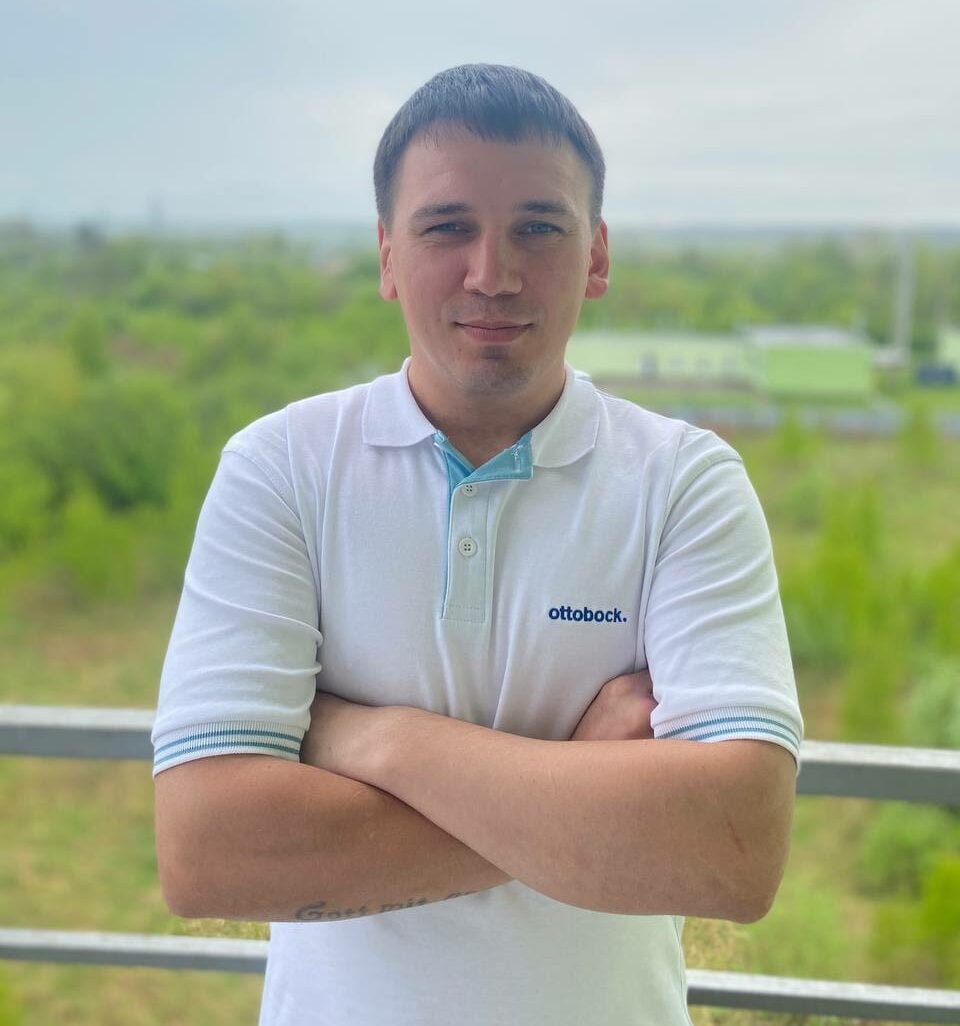
Ihor Yablonskyi. Photo from Yablonskyi's personal archive
What is the solution?
At the beginning of 2024, Yablonskyi, Bublyk, and Chornenkyi had a unique opportunity to study prosthetics under the supervision of experienced prosthetic trainers abroad. The BGV charitable foundation offered them an internship at Ottobock, a world leader in prosthetics, in Duderstadt, Germany.
The foundation had the chance to choose three prosthetists to undergo a three-month internship at the German company Ottobock. They contacted the Ukrainian rehabilitation center Halychyna, as they cooperated with them within the framework of the Ukrainian military prosthetics program.
The German non-profit organization #WeAreAllUkrainians financed all expenses for Ukrainian specialists' stays in Germany during their studies. The BGV Foundation took over all the organizational processes and covered logistical costs.
Ukrainian specialists' training consisted of a theoretical and a practical part. In particular, they learned how to correctly take measurements from people having an amputation above and below the knee, how to produce and align prostheses, fit them and adjust them. Next to the fitting, the psychological support for patients and their families, was stressed.
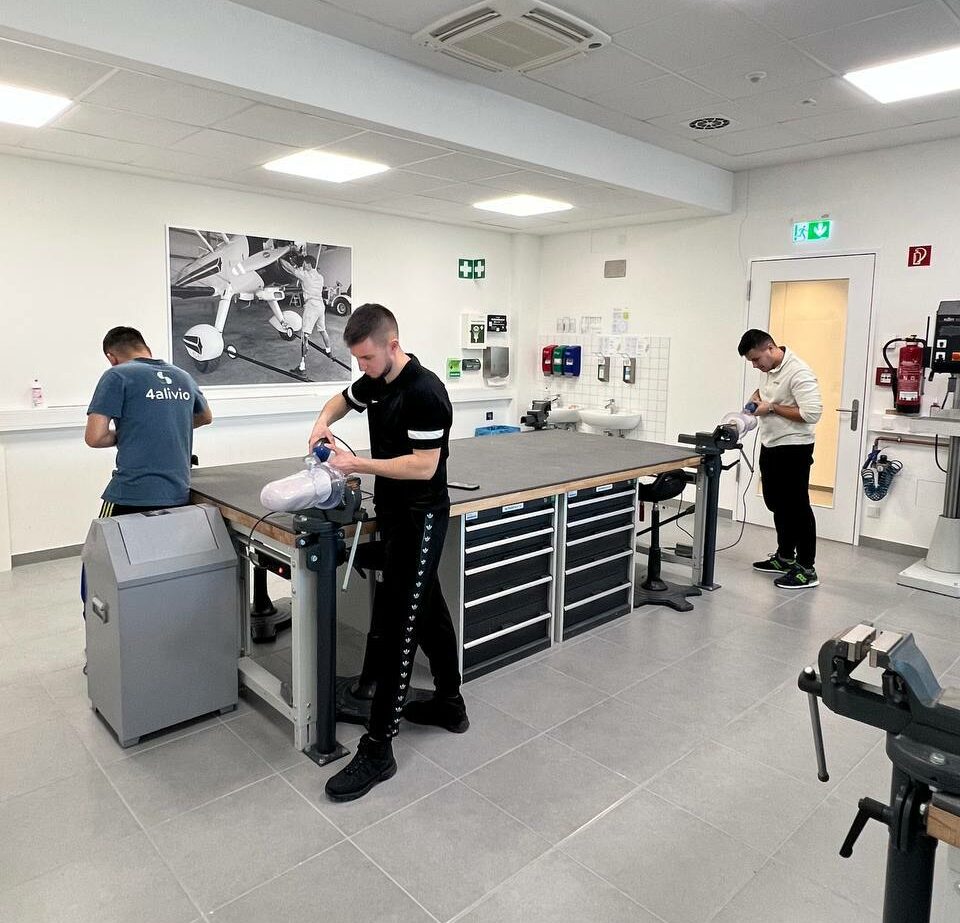
While training. Photo from the archive of BGV
How does it work?
Usually, training at Ottobock lasts a year, but Ukrainian specialists do not have that much time. A separate special three-month course was created for the group. It consisted mainly of trainings and practical classes focused on prosthetics of the lower limbs.
The first step is the anamnesis, where the patient's abilities and limb conditions are examined. Only then, under the instructions of the Ottobock teachers, did they learn to make them.
The specialists made plaster casts, based on which the socket connecting the amputated limb to the prosthesis were made by hand. First, they were trialed for testing and adjusted depending on the patient's needs and feelings. Later, prosthetists created the definitive socket, from which a full-fledged finished prosthesis was obtained.
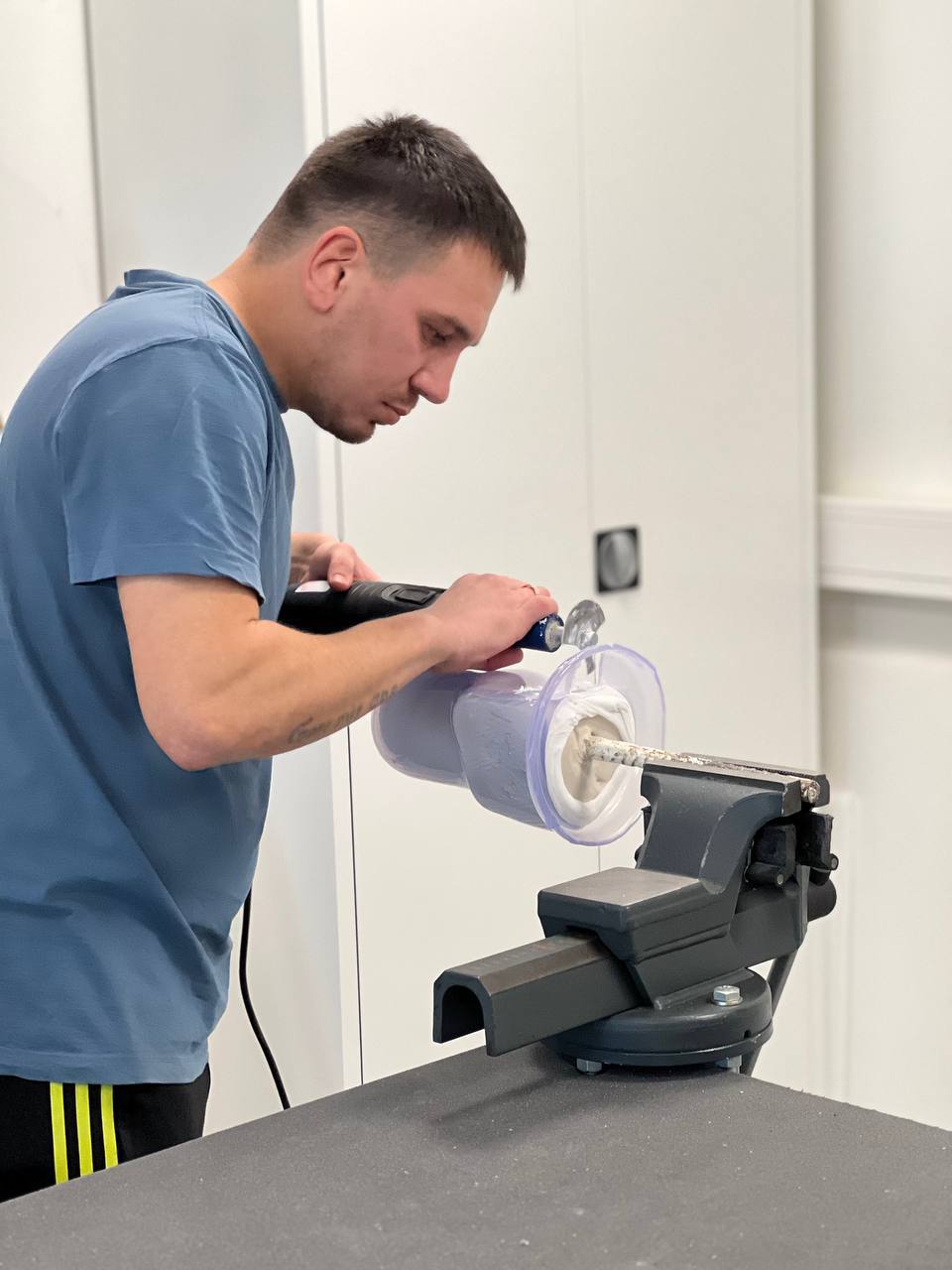
Ihor Yablonskyi produces a socket for a prosthesis. Photo from personal archives
"Although I had little experience with 3D prosthetics, I had never worked with the plaster technique. So, basically, I learned everything almost from scratch. Studying at Ottobock was radically different from my previous experience," says Bublyk.
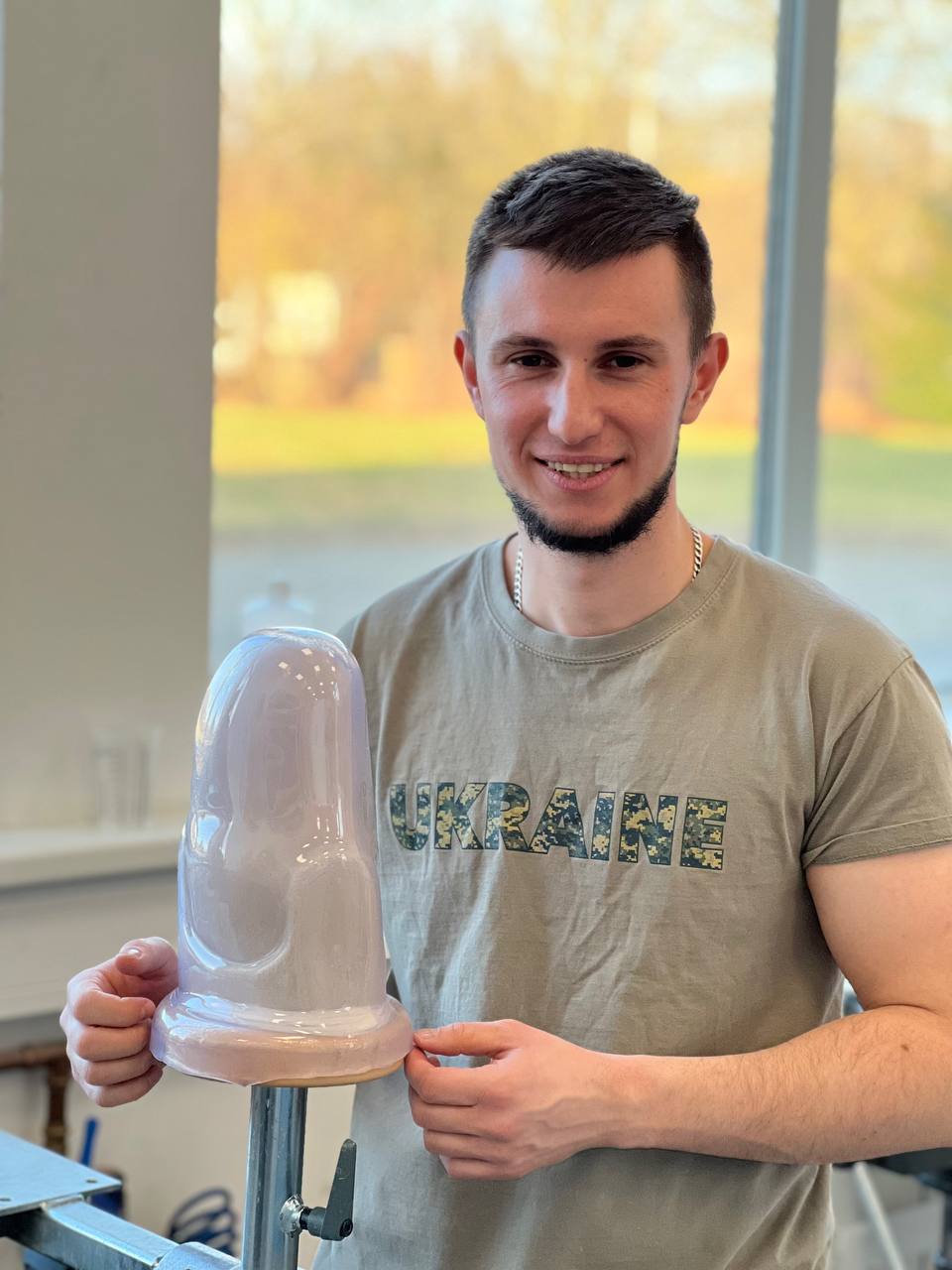
Yurii Bublyk. Photo from Bublyk's archive
The students learned about mechanical and mechatronic knee joints prostehtics. These joints are used in cases of amputation above the knee. The advantage of a prosthesis with an electronic knee is to make it easier to walk and move up the stairs because electronics perform part of the work.
The operation of such a prosthesis occurs according to certain codes, that can be activated by various actions. For example, if a person wants to ride a bicycle, they need to press the toe three times, and the prosthesis will get into the appropriate position. The specialist must adjust the joint to the patient and teach them how to use it correctly.
"For example, when a patient sits on a chair, they should feel resistance. It should not be the case that the knee simply bends, and the patient quickly falls on the chair. The joint must support it. And we were taught to adjust this mechanism so that the patient feels more confident and stable," says Chornenkyi.
Have they really succeeded?
The specialists immediately applied their newly acquired knowledge to real patients who had lost limbs. During their training, they made dozens of prostheses for various types of amputations.
Prosthetics for military personnel is a little more complicated than civilian prosthetics in Germany, Bublyk shares. The procedure itself is not different, but amputations often have various complications with blood vessels and nerve endings due to landmine blast injuries. Because of this, prostheses for the military require more attention and a unique approach to manufacturing.
Ukrainian prosthetists are gaining much practical experience in the prosthetics of particularly difficult amputations. They are learning to consider all the complications that exist and may arise in the future to manufacture the most comfortable prostheses. "If more Ukrainian specialists could study in Germany, the level of prosthetics in Ukraine would become much higher. Currently, Ukrainian prosthetists learn many things independently and intuitively in practice. However, I am convinced that our developments will definitely be useful for foreign colleagues in the future," says Bublyk.
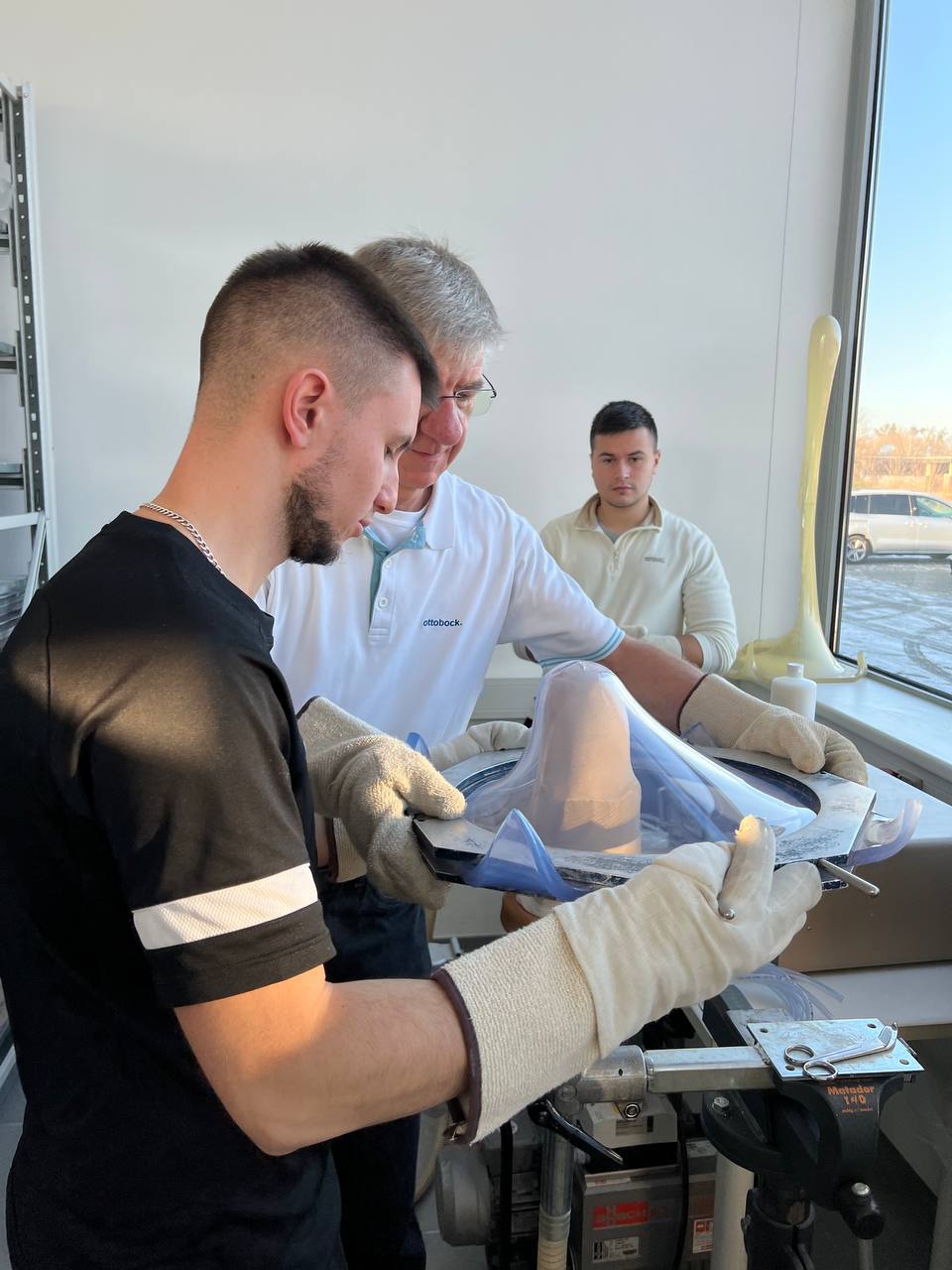
Yurii Bublyk makes a prosthesis for his patient in Germany. Photo from Bublyk's personal archive
The prosthetic method is selected for each patient individually. In addition to making and adjusting prostheses, the group was taught how to properly communicate with patients. Prosthetists need to be able not only to support a person but also to explain in understandable language what and why they are doing. As Yablonskyi notes, during the entire prosthesis process, you need to be as attentive as possible to the patient's behavior in order to make the prosthesis and getting used to it comfortable.
"When we work with a patient, we have to learn about their lifestyle and plans for the future because it affects the technologies and methods we will use," Bublyk explains.
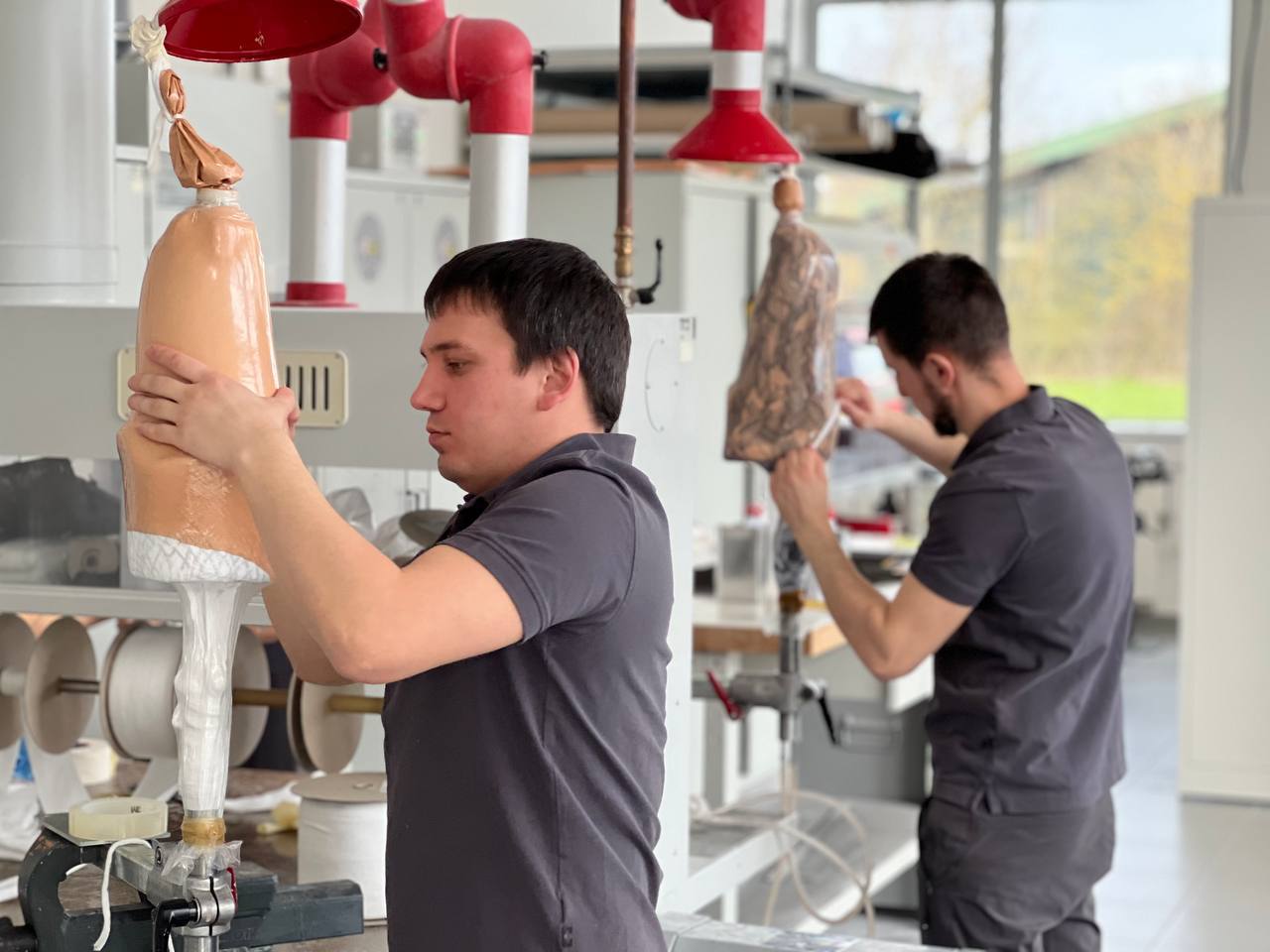
Yurii Bublyk and Ihor Yablonskyi make stump receivers for prostheses. Photo from the specialists' archive
At the end of the training, students passed two tests and received a certificate that confirms their ability to adjust, install, and maintain prostheses.
What's next?
Certificates were presented to the students during the farewell dinner, which was attended by prosthetists, their teachers, and patients.
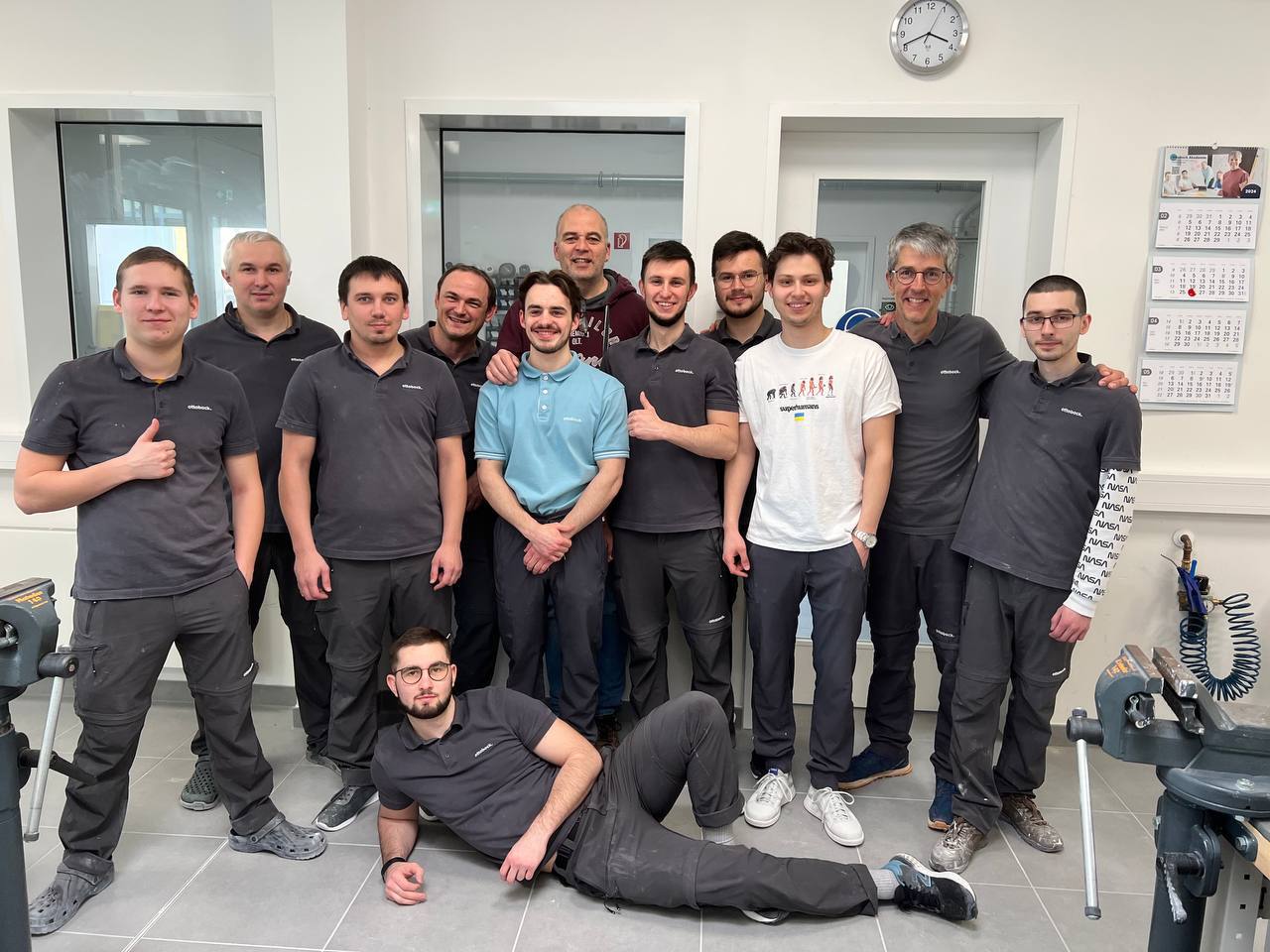
Prosthetists who underwent and conducted training. Photo from the archive of BGV
Speaking about the importance of this course, Chornenkyi says that he had very little work experience before studying at Ottobock, but now, he is capable of working with patients confidently. His colleagues also have clear plans after completing their studies.
"We plan to manufacture prostheses of the lower limbs for the military using the studied German technologies and methods. First, we will start with leg prosthetics, and gradually, we will also make hip prostheses," Bublyk shares.
After the workshop's opening, Bublyk and Yablonskyi plan to develop their knowledge in this field further and share it with colleagues. They are convinced that Ukraine will win the war and have considerable success in developing prosthetic innovations.








